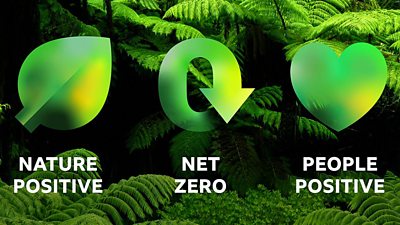
New ambitious ΒιΆΉΤΌΕΔ Net Zero targets have been verified by the globally-respected Science-Based Targets initiative (SBTi).
Building on our existing Near-Term Targets to halve emissions by 2030, our Long-Term Targets to reduce all emissions by at least 90% by 2050 have now been approved, and under this standard and definition we will be Net Zero by 2050.
The SBTi standard requires a 90% reduction in emissions with no more than 10% offset by 2050, favouring emissions reductions rather than offsetting to achieve true Net Zero.
We recognise that climate change and bio-diversity loss are real, serious and urgent, and have a clear strategy in place to reduce our environmental impact.
This includes adopting the highest standards and frameworks with science-based targets as part of our Net Zero strategy.
In 2022, the ΒιΆΉΤΌΕΔ and its commercial subsidiaries including ΒιΆΉΤΌΕΔ Studios committed to setting Long-Term Targets and the adoption of the Science-Based Targets Net Zero standard by the SBTi, the official body for validating climate goals.
Following approval by the SBTi, we now have Near and Long-Term Targets in place:
- Near-Term Targets: We commit to reduce absolute scope 1 and 2 greenhouse gas (GHG) emissions 46.2% by FY2030/31 from a FY2019/20 base year. We also commit to reduce absolute scope 3 GHG emissions 28% within the same timeframe.
- Long-Term Targets: We commit to reduce absolute scope 1, 2 and 3 GHG emissions 90% by FY2050/51 from FY2019/20 base year.
The target boundary includes land-related emissions and removals from bioenergy feedstocks.
The ΒιΆΉΤΌΕΔ aims to be a net positive organisation, giving back more to the planet than it takes out, including wider impacts on biodiversity. Our goal is to eliminate emissions at source and permanently, as quicky as possible. These targets will help enable us to transition to a credible Net Zero and Nature Positive future.
The ΒιΆΉΤΌΕΔ is fully committed to playing an active role in driving a sustainable media industry, producing internationally renowned content that informs our audiences on environmental issues, whilst minimising operational impacts.
To achieve this, our sustainability strategy is comprised of three elements:
- Nature Positive: We will manage our impact on nature, to do more good than harm to our planet.
- Net Zero: We have a credible strategy with clear targets to cut our emissions as quickly as we can.
- People Positive: We inform, educate and inspire on climate and nature and we are signatories to the Climate Content Pledge.
These plans will guide all of our activities to support the Value for All strategy and the ΒιΆΉΤΌΕΔ of the future. From the way we make our programmes and services, to how we manage our buildings and operations, and engage with our suppliers and partners.
Danielle Mulder, ΒιΆΉΤΌΕΔ Group Director of Sustainability says: βOur Near-Term Targets paved the way to setting Long-Term Targets to achieve true Net Zero by 2050.
βAdoption of the Long-Term Targets within the industry standard provides a credible approach that is underpinned by scientific rigour. Our approach to Net Zero is also fully aligned to our impact on biodiversity and nature positive plans.β
Notes to editors
- The Science-Based Targets Initiative (SBTi) is a global body enabling organisations to set emissions reductions targets in line with the latest climate science. Its goal is to accelerate companies across the world to support the global economy to halve emissions before 2030 and achieve Net Zero before 2050.
- The SBTiβs approved target language is as follows:
Overall Net-Zero Target: British Broadcasting Corporation (ΒιΆΉΤΌΕΔ) commits to reach net-zero greenhouse gas emissions across the value chain by FY2050/51.
Near-Term Targets: The British Broadcasting Corporation commits to reduce absolute scope 1 and 2 greenhouse gas (GHG) emissions 46.2% by FY2030/31 from a FY2019/20 base year*. The British Broadcasting Corporation also commits to reduce absolute scope 3 GHG emissions 28% within the same timeframe.
*The target boundary includes land-related emissions and removals from bioenergy feedstocks.
Long-Term Targets: British Broadcasting Corporation commits to reduce absolute scope 1, 2 and 3 GHG emissions 90% by FY2050/51 from FY2019/20 base year.
*The target boundary includes land-related emissions and removals from bioenergy feedstocks.
- Find out more about .
- The ΒιΆΉΤΌΕΔ recently released its , that revealed that:
o We are making significant progress against our direct operational (Scope 1 and 2) emissions and are currently tracking ahead of our 2023/24 target of -17% at -21 % reduction.